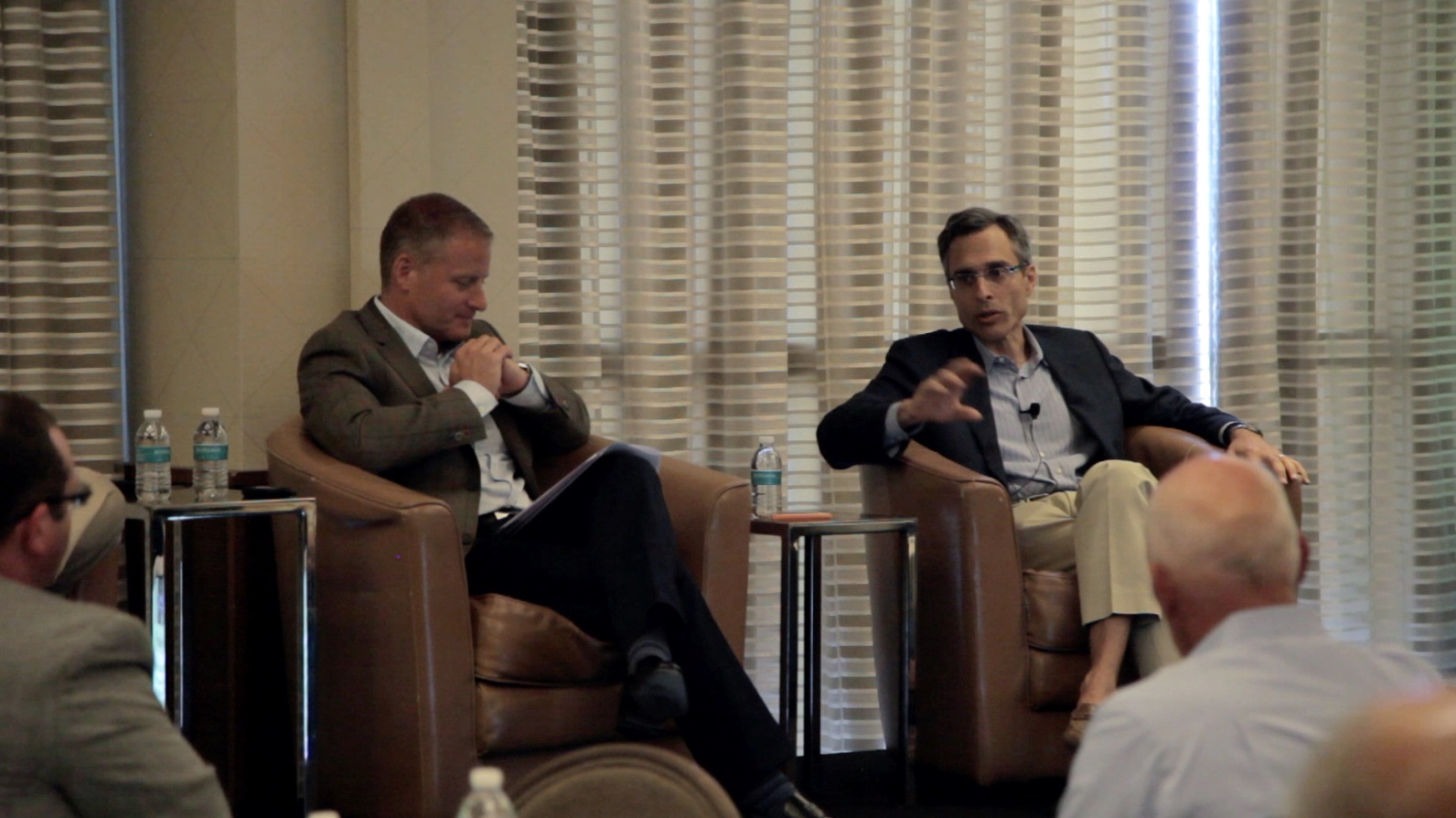At our recent Edison CEO Summit, we were very fortunate to have Tom Ebling and John Becker join me to discuss their experiences building marketing leaders and billions in market value. Tom and John began their careers as executives in Edison companies in
roles other than CEO (one was a CFO, the other head of development). We are grateful to have both Tom and John as active members of the Edison Director Network. They have each created companies with market caps of more than $1B. In fact, both have exceeded $2B enterprise values in companies they led.
In keeping with the Summit’s theme, Inspiring Leadership, during the fireside chat, Tom and John shared stories about their leadership experiences, including incredible insights and key lessons learned.
Here are some of my favorite lessons. The session can also be viewed on Youtube.
Lesson #1: Leadership (or as President Obama calls them, “learning moments”)
- Learn to be connected. Tom described a time when Demandware grew to a size where he did not know as many people personally as he once did, yet realized employees were keenly observing and drawing conclusions from his words and actions in a way that was not prevalent when the company was smaller.This highlights the importance of CEOs staying connected to employees by getting out of your office, walking around, talking to people on the front lines, as well as keeping “an ear to the ground” through trusted team members so that you have an ongoing sense for organizational temperature.
- Learn to be observant. John used to sit in the front row ready to learn and absorb. One day his mentor encouraged him to sit in the back of the room, suggesting he would learn a lot more from that vantage point, e.g., who is and is not engaged and how does that correlate to their performance? While you may be at a sales kick-off or quarterly business review, these represent excellent opportunities to observe team members who are not on stage, so to speak.
Lesson #2: Board Management Do’s
Boards are best utilized in an advisory capacity where they share experiences as well as challenge and guide the business. It is the responsibility of the CEO to manage his/her board by framing the necessary discussions (after all, the CEO has access to more information than board members). Use meeting time in a way that leads to the best possible outcomes.
Here are John and Tom’s board management do’s:
- Send board package at least three days in advance, expect that it will be reviewed and set agenda accordingly
- Use a standard dashboard as a common way to share and discuss key business metrics and dynamics
- Change up the meeting agenda and format as the state of the business requires (i.e., issues are not the same each quarter)
- In the interest of reaching agreement or resolution on key issues, socialize specific topics that require action or a decision in advance once the package has gone out.
Lesson #3: Growth vs. Profitability – the “Catch 22”
Many Edison CEOs have tough decisions to make regarding maintaining and accelerating growth (and raising capital to do so) versus getting or staying profitable. Both Tom and John place a high premium on growth and encourage companies to step on the gas when they start to see growth trends. Tom provided an example indicator for when it’s time to accelerate (this was also echoed in Kelly Ford’s (Edison CMO) session, Supporting the Entrepreneur’s Journey): When you have proven customer value to the extent that customers are renewing and expanding their investment with you. Are you bringing in significant CLTV relative to the level of sales effort? This is a great sign of potential scale.
Lesson #4: Exits: IPOs vs. Strategic Sales
Growth-stage CEOs think a lot about which direction to take their companies – getting public or getting sold -- and when is the right time to take one path versus another. Tom suggests that businesses with significant market opportunity and product aligned to that market, i.e., the total addressable market is significant, should run as though it will go public from a very early stage. As the time to go public gets closer, be more, not less, transparent about plans. John added that every CEO should run his/her company as if it will be taken public, because the reality is that ninety-nine percent of businesses don’t get acquired. Acquisitions are typically opportunistic with external factors at plan that cannot be predicted. As an example, there were only four buyers for the four companies John has sold throughout his career.
As an aside, Edison’s recent experience is that financial buyers are active; however, these buyers tend to lower initial offers in order to lock up a deal assuming they will find something in diligence. My belief is that this trend will continue until such time as entrepreneurs, VCs, boards and bankers exclude financial buyers from the finalist group of bidders unless they will be held to a very short (< 60 day) exclusivity period from LOI to closing.
Lesson #5: Toughest CEO Decisions
Both Tom and John have faced many a tough decision in their careers as CEO. I asked them to share one that was among the toughest. For Tom, it was a recent decision for Demandware to pursue expansion into Japan, the second largest market for retailers and brands in the world, and the most difficult market to penetrate for an American technology company. The primary considerations were when and how, and while the company has benefited from having board members who could share the dos and don’ts based on relevant experiences, there seemed to a lot more don’ts than dos.
The tough decision that stood out for John was whether or not to turn down an offer to buy his company. There was pressure from the board to accept, but he felt strongly about the value of the business and that it was worth more than the offer. As it turned out patience paid off and having an option was critical. John did ask for more -- and he got it.
Lesson #6: Common Young-Company Mistakes
I asked Tom and John to bring to light the two common mistakes they’ve seen young companies make, so that Edison CEOs can steer clear from making the same ones.
- Don’t throw the baby out with the bath water. Whether you are a company with a solution in search of a problem, or you simply have not proven repeatable value yet, it is normal to shift gears here and there. Tom encourages healthy experimentation, but advises to “stick with it.”
- Focus on the long term and try to see the forest from the trees. It’s easy to lose sight of longer term vision and the journey itself when the business requires so much focus on the here and now. John advises, “Don’t get too bogged down with closing that deal this quarter.” Pick your head up and think about the journey and the broader set of opportunities – it’s aspirational and motivational for you and your team.




